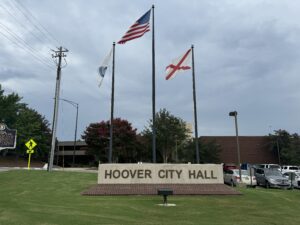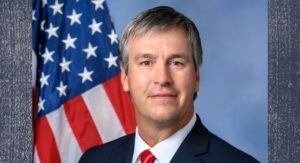Jim Zeigler wins State Auditor re-election in rematch with Miranda Joseph

Republican Jim Zeigler has won a second term to serve as Alabama State Auditor. Zeigler defeated Democrat Miranda Joseph in a rematch of the pair’s 2014 race for the same seat. With 82 percent of the precincts reporting, Zeigler is leading Joseph 61 to 39 percent, according to the Associated Press. Following the election results, Zeigler doubled-down on his commitment to serving the state. “The election results are a confirmation of my mission to add an additional role to the State Auditor’s office. I will continue my new service as a watchman against waste and mismanagement in government,” Zeigler said in a statement. “I will continue to improve both the property inventory audits and the new watchman role against waste and mismanagement.” The office of State Auditor The State Auditor’s office is tasked with providing accountability to the taxpayers of Alabama by maintaining accurate records of all personal property valued at $500 and above, as well as items deemed sensitive in nature. As well as serving as only check and balance between the Comptroller’s Office and the State Treasury.
Alabama just elected Kay Ivey, the state’s first-ever Republican woman Governor

Kay Ivey was elected the first-ever Republican woman governor of Alabama on Tuesday, besting her Democratic challenger Walt Maddox. Ivey, who had been lieutenant governor, assumed the position of governor 19 months ago when former-Gov. Robert Bentley resigned amid a growing scandal following allegations he used state resources to cover up an affair he was having with one of his former aides. Tuesday marks the first time Ivey was elected to the position. She gave the following remarks following her victory: The people of Alabama have spoken loud and clear: we want to keep Alabama on the right track and keep Alabama working! It is with immense gratitude that I stand before you tonight as the next Governor of Alabama. I am ever so grateful for your steadfast support, prayers and votes. Together, we have made history: first Republican woman elected Governor, and this is the first time in our history that a Lieutenant Governor has become Governor and then won the election for a full term as Governor. The odds were against me. Some said I would never make it across the finish line, while others claimed I was on my last breath. Well, nothing could be further from the truth! Not only did I finish, we finished very strong. And I am just now getting started! Most of you have seen my tv spot about how “this is as close I will ever be”… dreams are possible in Alabama! The last 19 months have been fast, challenging and rewarding. Working together, Alabama has achieved new heights. But we must not rest on our success. With your help and support, I plan to replicate a proven model over the next four years…our best days are ahead of us. I’ve always said I have one simple goal as a public servant. When I walk away, I want to leave things better than when I started. With your help, we will make Alabama a better place to raise a family, own a home, and create a business. May God continue to bless each of you and the great State of Alabama!”
Alabama incumbents sweep Congressional elections
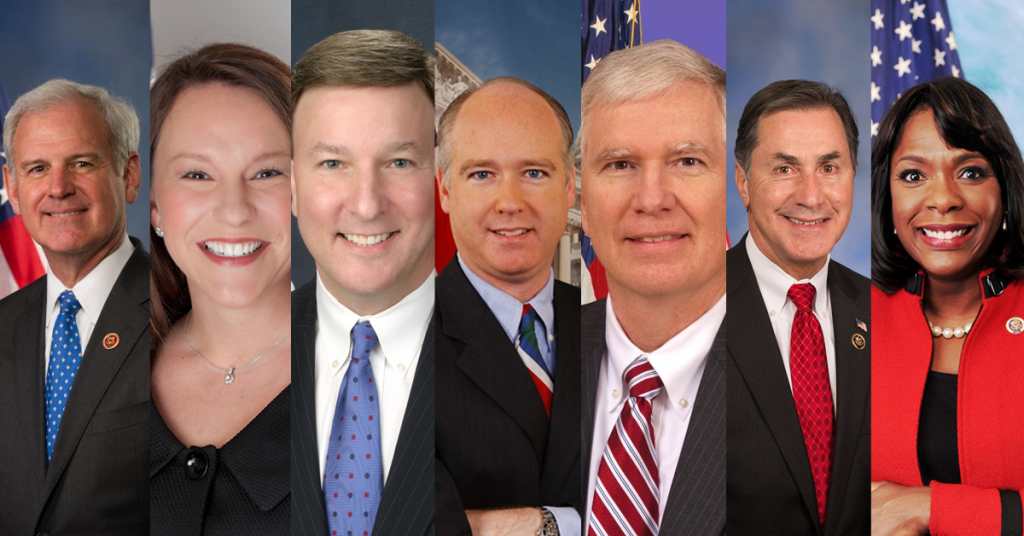
Incumbents carried the midterm elections in Alabama on Tuesday, with six contested races resulting in all six Members of Congress winning their re-election bids. The Associated Press has called all races for the U.S. House of Representatives. 1st District U.S. Rep. Bradley Byrne, 2nd District U.S. Rep. Martha Roby, 3rd District U.S. Rep. Mike Rogers, 4th District U.S. Rep. Robert Aderholt, 5th District U.S. Rep. Mo Brooks and 6th District U.S. Rep. Gary Palmer, all incumbents, all Republicans, handily won their given races. Incumbent and lone Congressional Democrat, 7th District U.S. Rep. Terri Sewell ran unopposed.
Mo Brooks to return to Washington, wins re-election over Peter Joffrion

Republican Mo Brooks will return to Washington, D.C. where he’ll continue to represent Alabama’s 5th Congressional District. Brooks defeated his Democratic opponent Peter Joffrion on Tuesday, winning his fifth term in the U.S. House of Representatives. With 73 percent of the precincts reporting, the Associated Press called the race for Brooks who leads Joffrion 60 to 39 percent. The 5th District encompasses Lauderdale, Limestone, Madison, Morgan and most of Jackson counties.
Republican Robert Aderholt wins 12th term in Congress, defeats Democrat Lee Auman

Alabama 4th District U.S. Rep. Robert Aderholt won a 12th term Congress Tuesday as he defeated Democrat and political newcomer Lee Auman. With 45 percent of the precincts reporting, the Associated Press called the race for Aderholt who leads Auman 82 to 17 percent. The 4th Congressional District includes Franklin, Colbert, Marion, Lamar, Fayette, Walker, Winston, Cullman, Lawrence, Marshall, Etowah and DeKalb counties. It also includes portions of Jackson, Tuscaloosa, and Cherokee counties. This article will be updated will full results.
Mike Rogers bests former Miss America Mallory Hagan, wins re-election

Alabama 3rd District U.S. Rep. Mike Rogers will keep his seat in Congress as he defeated Democrat and former Miss America Mallory Hagan on Tuesday. With 27 percent of the precincts reporting, the Associated Press called the race for Rogers who will continue representing the eastern Alabama district. This article will be updated will full results.
Alabama voters say nation headed in right direction

A majority of voters casting midterm election ballots in Alabama said the country is headed in the right direction, according to a wide-ranging survey of the American electorate. As voters cast ballots for governor and members of Congress in Tuesday’s elections, AP VoteCast found that 59 percent of Alabama voters said the country is on the right track, compared with 41 percent who said the country is headed in the wrong direction. Here’s a snapshot of who voted and why in Alabama, based on preliminary results from AP VoteCast, an innovative nationwide survey of about 138,000 voters and nonvoters _ including 774 voters and 235 nonvoters in the state of Alabama _ conducted for The Associated Press by NORC at the University of Chicago. ___ RACE FOR GOVERNOR Voters under 45 were split between Republican Kay Ivey and Democrat Walt Maddox in the race for governor. Voters ages 45 and older were more likely to favor Ivey. Voters without a college degree modestly supported Ivey. Similarly, college graduates preferred Ivey. ___ TOP ISSUE: IMMIGRATION Immigration was at the forefront of voters’ minds: 32 percent named it as the most important issue facing the nation in this year’s midterm elections. Others considered the economy (19 percent), health care (19 percent), terrorism (11 percent) and gun policy (8 percent) to be the top issue. ___ STATE OF THE ECONOMY Voters have a positive view of the nation’s current economic outlook _ 63 percent said the nation’s economy is good, compared with 37 percent who said it’s not good. ___ TRUMP FACTOR For 42 percent of Alabama voters, President Donald Trump was not a factor they considered while casting their votes. By comparison, 38 percent said a reason for their vote was to express support for Trump, and 19 percent said they voted to express opposition to Trump. A majority of voters in Alabama had positive views of Trump: 64 percent said they approve of how he is handling his job as president, while 36 percent said they disapprove of Trump. ___ AP VoteCast is a survey of the American electorate in all 50 states conducted by NORC at the University of Chicago for The Associated Press and Fox News. The survey of 774 voters and 235 nonvoters in Alabama was conducted Oct. 29 to Nov. 6, concluding as polls close on Election Day. Interviews in English and Spanish with self-identified registered voters selected from opt-in online panels are calibrated with interviews of randomly sampled registered voters nationwide. The margin of sampling error for voters is estimated to be plus or minus 10.1 percentage points. Although there is no statistically agreed upon approach for calculating margins of error for non-probability samples, the margin of error is estimated using a calculation called the root mean squared error and other statistical adjustments. All surveys are subject to multiple sources of error, including from sampling, question wording and order, and nonresponse. Find more details about AP VoteCast’s methodology at https://www.ap.org/votecast. ___ AP created this story automatically using data from NORC. Republished with permission from the Associated Press.
A look at the voting history of Alabama’s 3rd Congressional District
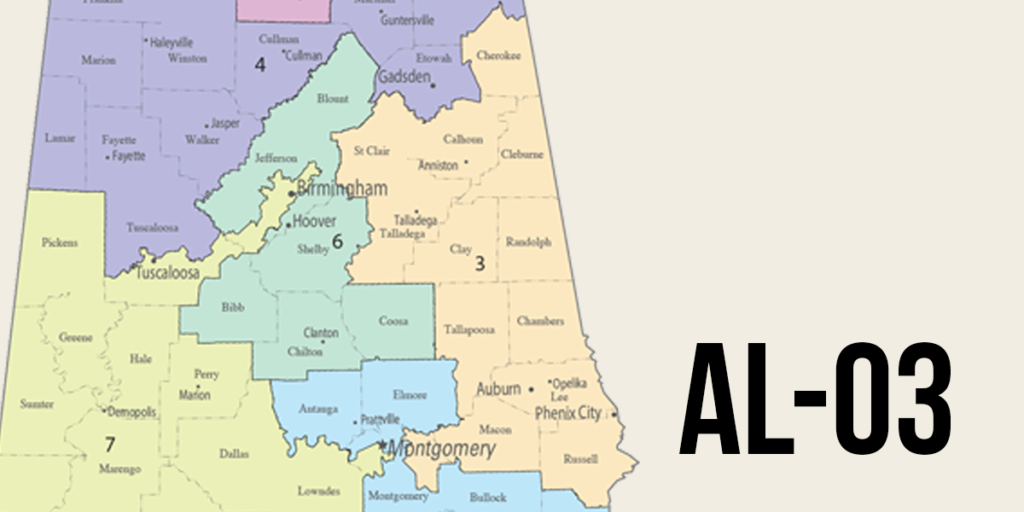
For over a century Alabama’s 3rd Congressional District was a solid blue district in U.S. House of Representatives, but in 1997 the district flipped red and it’s not come close to changing back since then. Located in eastern Alabama, the district includes Calhoun, Chambers, Clay, Cleburne, Lee, Macon, Randolph, Russell, St. Clair, Talladega, and Tallapoosa counties as well as portions of Cherokee and Montgomery counties. Since 2003 Rep. Mike Rogers has held the seat. Rogers was first elected in 2002 when Bob Riley successfully ran for governor and left the 3rd district vacant. Prior to that he was a member a member of the Alabama State House of Representatives, and a member of the Calhoun County Commission before that. In the 2018 General Election, Rogers faces political newcomer, former Miss America Mallory Hagan. Prior to her Congressional run, Hagan, an Opelika, Ala. native, worked as co-anchor of the evening newscast on WLTZ in Columbus, Ga. FiveThirtyEight, a statistics-driven news-and-analysis site, anticipates Rogers easily winning the 3rd District yet again. Here’s a look at the voting history of the District: U.S. House, Alabama District 3 General Election 2016 Mike Rogers (R) 69.9 percent 192,164 votes Jesse Smith (D)32.9 32.9 percent 94,549 votes Write-in 0.1 percent 391 40.5 percent 287,104 total votes General Election 2014 Mike Rogers (R) 66.1 percent 103,558 votes Jesse Smith (D) 33.7 percent 52,816 votes Write-in 0.2 percent 246 votes 156,620 total votes General Election 2012 Mike Rogers (R) 64 percent 175,306 votes John Andrew Harris (D) 35.8 percent 52,816 votes Write-in 0.2 percent 483 votes 273,930 total votes General Election 2010 Mike Rogers (R) 59.5 percent 117,736 votes Steve Segrest (D) 40.5 percent 80,204 votes 197,940 total votes General Election 2008 Mike Rogers (R) 54.1 percent 142,708 votes Joshua Segall (D) 45.9 percent 121,080 votes 263,788 total votes
Donald Trump views midterms through presidency-defining lens

President Donald Trump knows he’s on the line. The president spent Election Day calling allies, tweeting endorsements and following news coverage, after concluding a six-day rally blitz in Missouri late Monday. Trump packed his closing argument with hardline immigration rhetoric and harsh attacks on Democrats as he stared down the prospect of Republican losses that could shadow his presidency. “Everything we have achieved is at stake,” he said. “Because they can take it apart just as fast as we built it.” Faced with the possibility of keeping the Senate, but losing the House, aides have begun laying out the political reality to Trump, who could face an onslaught of Democratic-run investigations and paralysis of his policy agenda. In turn, Trump has already been trying out defensive arguments, noting that midterm losses are typical for the party in the White House, pointing out a high number of GOP retirements and stressing that he has kept his focus on the Senate. But the election remained likely to serve as a referendum on Trump’s racially charged appeals and the strength of the coalition that powered him to the White House — a group he will need again in just two years. Trump’s scorched-earth campaigning came to define the 2018 campaign. In the final days, he sought to motivate supporters with the battle over the confirmation of Supreme Court Justice Brett Kavanaugh — at one point mocking a woman who claimed the judge had sexually assaulted her when they were in high school. Returning to his immigration-heavy 2016 playbook, Trump went on to unleash his full fury on a caravan of migrants slowly making their way to the southern border. His take-no-prisoners approach troubled many Republicans seeking to appeal to moderate voters in suburban House districts, but Trump prioritized base voters in the deep red states that could determine the fate of the Senate. At times he even appeared at odds with his own campaign, which in the election’s final days released a gauzy ad aimed at suburban women. Trump did not care for the soft-focus ad, which notably did not mention him, according to a person familiar with the president’s thinking who was not authorized to speak publicly. Instead he promoted a shocking, expletive-loaded video featuring a Latino man convicted of murdering two police officers, which was widely decried as being racist. But while Trump’s plays to his most loyal supporters help rev up the crowds in small towns and rural areas in red states, they were viewed as a turnoff to moderates, independents and women in the suburban districts needed to keep the House in GOP hands. Still, Trump brushed off criticism that he was alienating moderate voters as he continued his massive rallies and overheated rhetoric. “These rallies are the best thing we’ve done. I think that the rallies have really been the thing that’s caused this whole big fervor to start and to continue,” he told reporters on Sunday. During the final stretch of the race, Trump tore across the country, holding 11 rallies over six days. On Monday, he blitzed through a trio of Midwest states he won in 2016 — Ohio, Indiana and Missouri — exhorting his supporters to help send Republicans to Capitol Hill to help safeguard his administration’s accomplishments and a booming economy. “It’s all fragile. Everything I told you, it can be undone and changed by Democrats if they get in,” Trump told supporters during a telephone town-hall organized by his campaign before Air Force One took off for Cleveland. “You see how they’ve behaved. You see what’s happening with them. They’ve really become radicalized.” Trump pointed to his boisterous rally crowds as proof that Republicans were surging at the right time, rejecting suggestions that Democrats entered Election Day with an edge in enthusiasm. He frequently invoked his upset win in 2016 and tried to recapture that energy in his final rallies, at times relegating the candidates he had traveled to endorse to supporting actors in the theater of a Trump rally. And he plowed forward despite a spate of election-season violence that gripped the nation. He continued to hold events amid a mail bomb scare that targeted his political opponents and went forward with a rally hours after a gunman massacred 11 people in a Pittsburgh synagogue. While Trump condemned violence and anti-Semitism, at times he seemed to view the tragedies through the lens of his own political fate. At a rally in Missouri on Thursday, he bemoaned the fact that “two maniacs” had blunted GOP campaign “momentum.” Trump added that “we don’t care about momentum when it comes to a disgrace like just happened to our country.” But he then added the tragedies had served to “stop a certain momentum, and now the momentum is picking up.” At his final rally late Monday in Missouri, Trump aligned stars of the conservative media, appearing with radio host Rush Limbaugh and Fox News personalities Sean Hannity and Jeanine Pirro. He basked in one of the loudest ovations of the campaign, a thunderous multi-minute cheer as he took the stage in Cape Girardeau. The crowd broke into a spontaneous version of “Amazing Grace” as medics attended to a rallygoer who had collapsed. Republished with permission from the Associated Press.
A look at the voting history of Alabama’s 2nd Congressional District
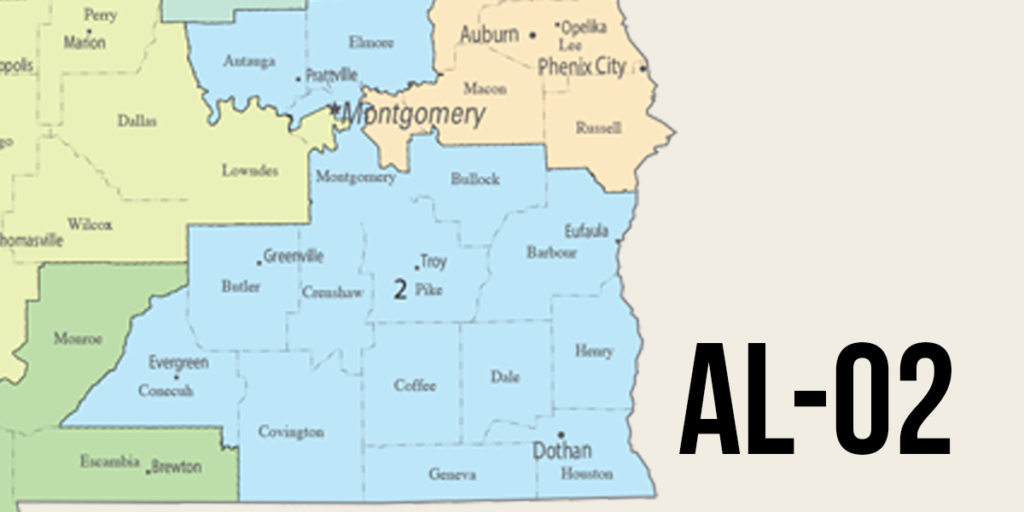
Alabama’s 2nd Congressional District in the U.S. House of Representatives is considered a solid red district. In fact, Cook Political Report deems it R+16, meaning in the previous two presidential elections, this district’s results were 16 percentage points more Republican than the national average. Located in southeastern Alabama, the district includes Autauga, Barbour, Bullock, Butler, Coffee, Conecuh, Covington, Crenshaw, Dale, Elmore, Geneva, Henry, Houston, and Pike counties and a portion of Montgomery County. Currently Rep. Martha Roby fills the seat. First elected during the Tea Party wave of 2010, Roby has be re-elected three times, in 2012, 2014 and 2016. Prior to her time in Congress, Roby worked as an attorney and served as a city councilman in her hometown of Montgomery. In the 2018 General Election Byrne faces political newcomer, Democrat Tabitha Isner, an ordained minister turned policy analyst. FiveThirtyEight, a statistics-driven news-and-analysis site, anticipates the 2nd District race being in the closest in the state, giving Isner a 1 in 40 chance of winning the seat. That said, Alabama’s 2nd District has only supported a Democrat for Congress once, and only for only two years, since 1965. Here’s a look at the voting history of the District: U.S. House, Alabama District 2 General Election 2016 Martha Roby (R) 48.8 percent 134,886 votes Nathan Mathis (D) 40.5 percent 112,089 votes Write-in 10.7 percent 29,609 276,584 total votes General Election 2014 Martha Roby (R) 67.3 percent 113,103 votes Erick Wright (D) 32.6 percent 54,692 votes Write-in 0.1 percent 157 votes 167,952 total votes General Election 2012 Martha Roby (R) 63.6 percent 180,591 votes Therese Ford (D) 36.3 percent 103,092 votes Write-in 0.1 percent 270 votes 283,953 total votes General Election 2010 Martha Roby (R) 51.1 percent 111,645 votes Bobby Bright (D) 48.9 percent 106,865 votes 218,510 total votes General Election 2008 Bobby Bright (D) 50.2 percent 180,591 votes Jay Love (R) 49.6 percent 142,578 votes Write-in 0.2 percent 448 votes 287,394 total votes
A look at the voting history of Alabama’s 1st Congressional District
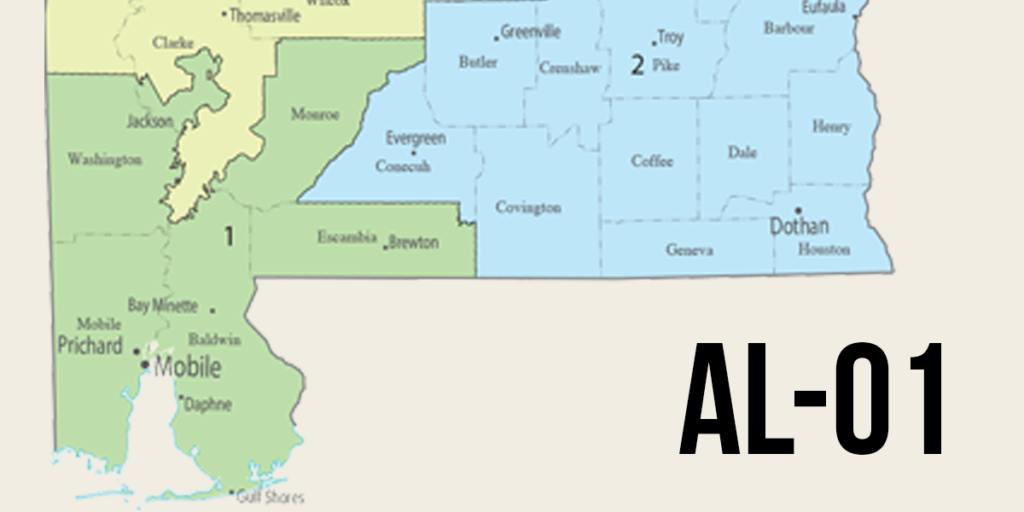
For the past decade Alabama’s 1st Congressional District in the U.S. House of Representatives has been a solidly red district for over 20 years. Located in southwestern Alabama, the district includes Mobile, Baldwin, Escambia, Monroe and Washington counties and a part of Clarke County. Currently Rep. Bradley Byrne, a former member of the Alabama State Senate, fills the seat. He was first elected during a special election in December 2013 after 10-year incumbent Jo Bonner announced his retirement to become vice chancellor for the University of Alabama in Tuscaloosa. Byrne has since been re-elected twice, in 2014 and 2016. In the 2018 General Election Byrne faces political newcomer, Democrat Robert Kennedy Jr., a military veteran and and business executive. FiveThirtyEight, a statistics-driven news-and-analysis site, anticipates that Byrne will coast to victory on Election Day, giving Kennedy Jr. only a 0.1 percent chance of winning the seat. Here’s a look at the voting history of the District: U.S. House, Alabama District 1 General Election 2016 Bradley Byrne (R) 96.4 percent 208,083 votes Write-in 3.6 percent 7,810 votes 215,893 total votes General Election 2014 Bradley Byrne (R) 68.2 percent 103,758 votes Burton LeFlore (D) 31.7 percent 48,278 votes Write-in 0.1 percent 198 votes 152,234 total votes General Election 2012 Jo Bonner (R) 97.9 percent 196,374 votes Write-in 2.1 percent 4,302 votes 200,676 total votes General Election 2010 Jo Bonner (R) 83 percent 129,063 votes David Walter (C) 17 percent 26,357 votes 155,420 total votes General Election 2008 Jo Bonner (R) 98.3 percent 210,660 votes Write-in 1.7 percent 3,707 votes 214,367 total votes
Blue wave or red tide? Americans are casting votes to decide
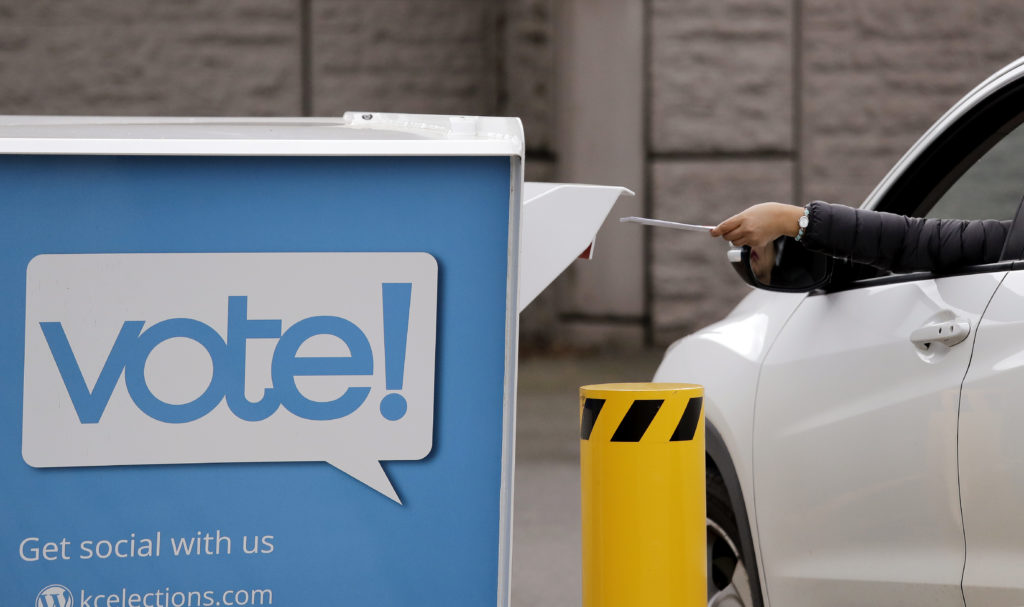
Clara Swallows pulled herself out of bed. Her aching back made her want to stay put, but the 74-year-old in Indiana had somewhere she needed to be: the polls. Seven hundred miles away in Florida, Stephanie Kent suspended repairs to her home — flooded during Hurricane Michael — and drove 20 miles out of the way to circumvent a still-closed bridge just to cast her ballot, too. Like Swallows and Kent, more than 30 million Americans already have voted in a midterm election expected to draw unprecedented numbers by the time polls close Tuesday night. In casting their ballots for House and Senate races, voters will render a verdict on President Donald Trump‘s tumultuous tenure, deciding whether his 2016 election was a one-off or if his divisive style of governing will define the future of American politics. Swallows and Kent voted from opposite ends of the political schism. Swallows was determined to help put Democrats in office to curtail Trump’s agenda, while 54-year-old Kent committed to Republicans as a show of support for him. But both agreed this election was among the most important of their lifetimes. “I woke up in pain, but I said I’m going to get out and do this,” said Swallows, a former Republican who has never before voted in a midterm. She cast her ballot for all Democrats, citing Trump’s stirring of racial and political tension. “I’m here to say that hatred is not going to win. We are not going to stand for it.” Trump has sought to counter some of that rage toward his administration by stoking even more anger among his base. In recent weeks, he’s put the spotlight on a caravan of Central American migrants fleeing poverty and violence that he calls “an invasion” of criminals and terrorists. He ran an advertisement about immigration so racially incendiary that all three major cable news networks, including Fox News, either refused to air it or eventually decided to stop showing it. Among some Republican voters, that message resonated. “This whole thing with this caravan is pretty scary,” said Jennifer Rager, 55, of Bozeman, Montana, who approves of Trump’s plans to crack down on immigration. She cast her ballot to keep Republicans in power so the president doesn’t become a lame duck. “It just feels like he’s really trying to do a good job of protecting our country, you know? I can’t wrap my head around why the other side is so unhappy and so terrified.” In St. Louis, Susan Riebold, 53, posed for a photo with a cardboard cutout of Trump at a pre-Election Day rally for her Republican candidate for U.S. Senate. She said she fully supports Trump’s decision to send military troops to the Mexican border to intercept the caravan — a move critics say is unnecessary and a political stunt, given the migrants are traveling mostly on foot and remain hundreds of miles away. The country, she said, “is more strong, confident and unified than it’s ever been, and most of the confidence and people feeling unified and patriotic again has come right before Trump got in and since he’s been in.” And she dismissed any criticism of the president as fake news. “We hate the media,” she said, “because they’re the Democratic arm.” Others expressed a heightened sense of unease and sadness about the state of America’s political climate. The election comes just days after a series of hate crimes and political attacks, including the arrest of a man who mailed pipe bombs to Trump critics whom the president often derides as “evil,” ”un-American,” and “the enemy.” Many voters said they saw the election as an opportunity to reject that kind of bombast. “We’ve forgotten our decency. We’ve forgotten the truth,” said Morris Lee Williams, 67, an Army veteran and member of Zion Travelers Missionary Baptist Church in St. Louis. “We’re supposed to be a group of people, Americans, who are supposed to be that light in the world. Instead of a light, it’s turned into a nightmare.” In suburban Chicago, Lea Grover agreed. “It seems to me a referendum on empathy, and whether or not we as a nation have any,” said the 34-year-old mother of three daughters. Grover, a survivor of sexual assault who works for a nonprofit that helps other victims, was angered by the confirmation hearings for Supreme Court Justice Brett Kavanaugh. He was accused by a high school classmate of sexually assaulting her decades ago. Republicans voted to confirm Kavanaugh, and Trump at one point mocked the accuser during a rally. Voters on the other side were also galvanized by the Kavanaugh hearings. Judy Jenkins, a 60-year-old Republican who works in accounting, cast her ballot Tuesday at a suburban church down the street from her home in Westerville, Ohio, and said she voted for only GOP candidates. She said she used to vote for people from both major parties but was so upset by how Kavanaugh was treated that she vowed not to vote for a Democrat again. “I’m not even going to consider it because of the hell they put his family through,” she said. “No one should have to go through that, whether you’re a Democrat or a Republican.” She said Republicans are moving in the right direction when it comes to health care, and she feels good about the economy. “They may not be perfect, but who is?” she said. Civil engineer Pritesh Mehta also cast his vote for Republicans who would support the president. Mehta, who lives in Little Rock, Arkansas, emigrated from India in 2000 and believes Trump is steering the country in the right direction, including with his immigration policies. Mehta came legally, he said, and he doesn’t see anything wrong with vetting others who want to live in the United States. Uroosa Jawed is an immigrant, too. She relocated from Pakistan with her family when she was 5. Now 42 and a naturalized citizen living in Omaha, Nebraska, she has always considered herself an American. But

